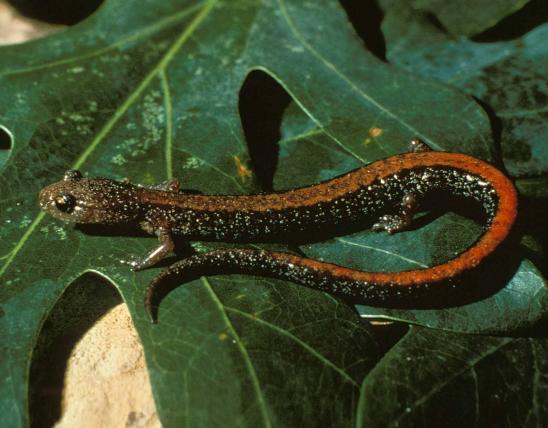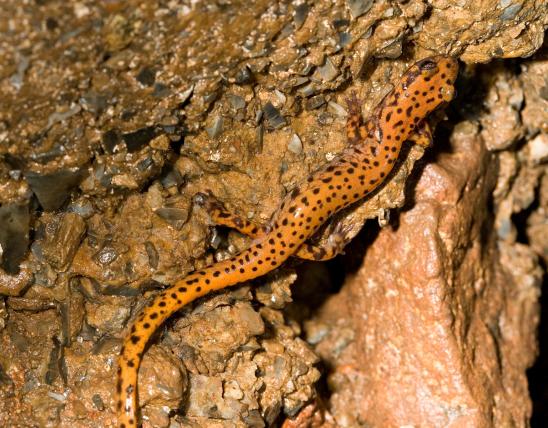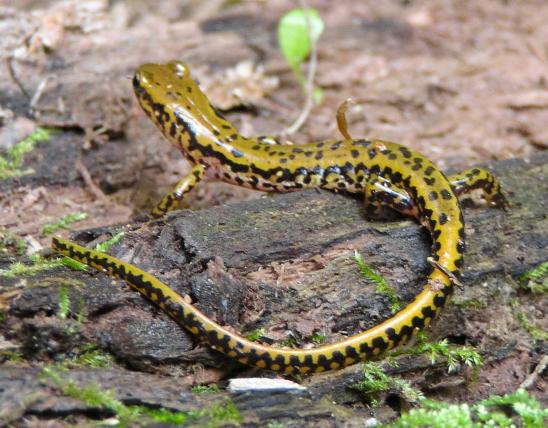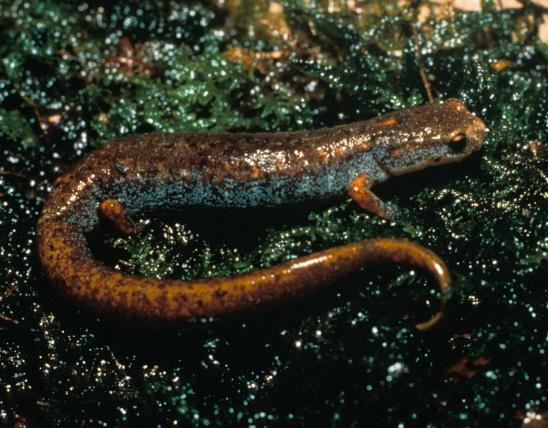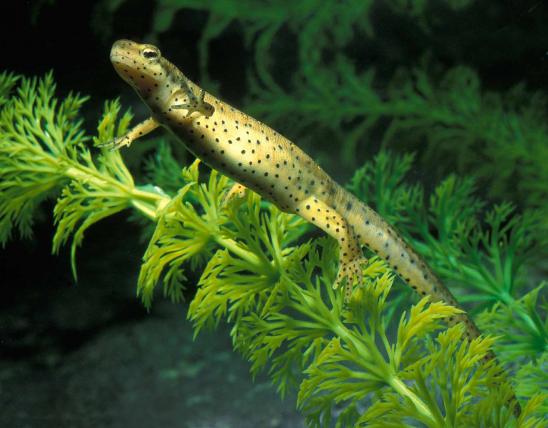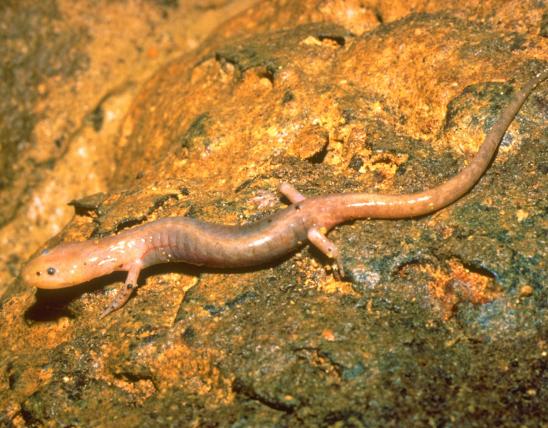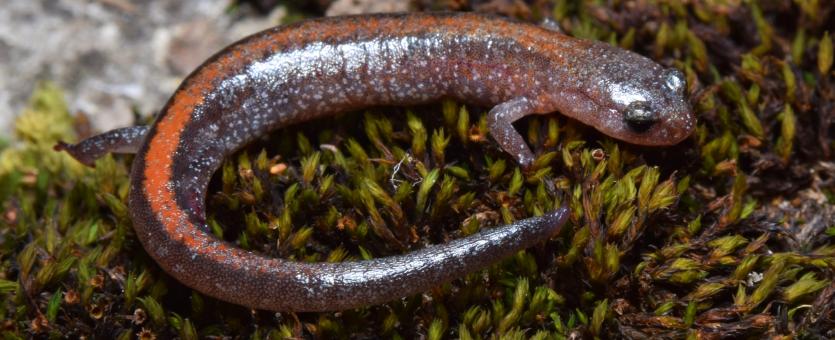
The Ozark zigzag salamander is a small, dark, and slender woodland salamander with a narrow, somewhat lobed stripe running along the back. This dorsal stripe usually has irregular or wavy edges, and it may be yellow, yellow orange, orange, or red. Dark brown or black pigment may invade the dorsal stripe, making it look lobed, or it may cover a large part of the stripe. The dorsal stripe is usually less than one-third the width of the body; it is widest near the hind limbs. Some individuals may lack a dorsal stripe. The belly has white and black mottling. The sides are dark gray or brownish gray with some orange or red and small white flecks. There are 17–19 costal grooves (vertical grooves on the sides of the body).
Similar species: The dorsal stripe of the southern red-backed salamander (P. serratus) is uniform in width, wider, and has serrated (toothed) edges. Its range overlaps, but it mostly occurs north and east of the Ozark zigzag’s range.
Adult length: 2¼–4 inches.
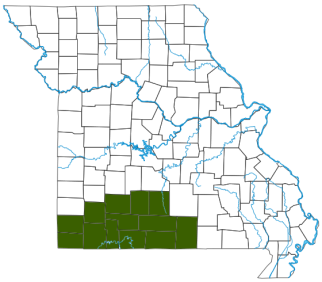
Occurs in the south and southwestern portion of the Missouri Ozarks, mainly southwestern counties along the Arkansas border.
Habitat and Conservation
Ozark zigzag salamanders live in upland forest areas. They generally live in cooler and damper habitats than those preferred by Missouri's other lungless salamanders, such as the southern red-backed salamander.
Ozark zigzag salamanders live mainly in or under rotten logs, rocks, and leaf litter in seepages near small streams and on steep hillsides, as well as in or near caves.
Ozark zigzag salamanders are most likely to be found on the surface during cooler, wet conditions between September and May. During the dry summer months they are difficult to find and likely take refuge in deep underground environments. Like many of their close relatives, Ozark zigzag salamanders communicate among themselves and establish territorial boundaries by use of chemical odors.
Food
The diet consists of very small arthropods, including flies, mites, and ants.
Status
This endemic salamander of the southern Ozark Highlands is common in damp hardwood forests with rocky substrates and rotting logs.
Taxonomy: This species was once considered a subspecies of the northern zigzag salamander (P. dorsalis). But the Ozark zigzag salamander is both geographically isolated and genetically divergent from that species, so scientists elevated it to full species status.
Life Cycle
Courtship and breeding may occur in autumn, winter, and early spring. Egg-laying primarily occurs in June and early July. Females likely deposit eggs deep underground, in cavities and crevices or in other cool, damp niches that are inaccessible to humans. There are 2–5 eggs per clutch. Females remain with the eggs until they hatch in mid-August and early September.
The brooding behavior of the females apparently helps to retain moisture in the eggs, reduce fungal outbreaks in the clutch, and protect them from predation.
Females apparently usually breed biennially (every other year).
Like all other species of their genus, Ozark zigzag salamanders go through complete development in the egg and hatch as tiny replicas of the adults. They become sexually mature at about 2 or 3 years of age.
Human Connections
Keeping this species common in Missouri requires protection of intact upland forests with seeps, small creeks, and karst (cave, spring, and sinkhole) habitat.
Like other amphibians in our state, this salamander depends on humans to restrain from destroying, degrading, and fragmenting their native habitat. Salamanders are both literally and figuratively voiceless. People who care about their survival must speak up for them when it comes to public policy.
Ecosystem Connections
These and other lungless salamanders are integral parts of the caves and forested streams, springs, and seeps they occupy. As predators, they help control the numbers of the insects and other creatures they eat. As prey, the adults, eggs, and young help feed larger predators.
This is a member of the lungless salamander family (Plethodontidae). It’s a large family with 27 genera and about 443 species. The family probably originated in the southern Appalachian Mountains; its members now occur over the eastern half of North America, the West Coast, and into Mexico, Central America, and northern South America. A few species also occur in southern Europe and South Korea.
The lungless salamander family is named because the adults lack lungs and most lack gills; the oxygen they require is taken from their environment through the skin and mucous membrane of the mouth.
























